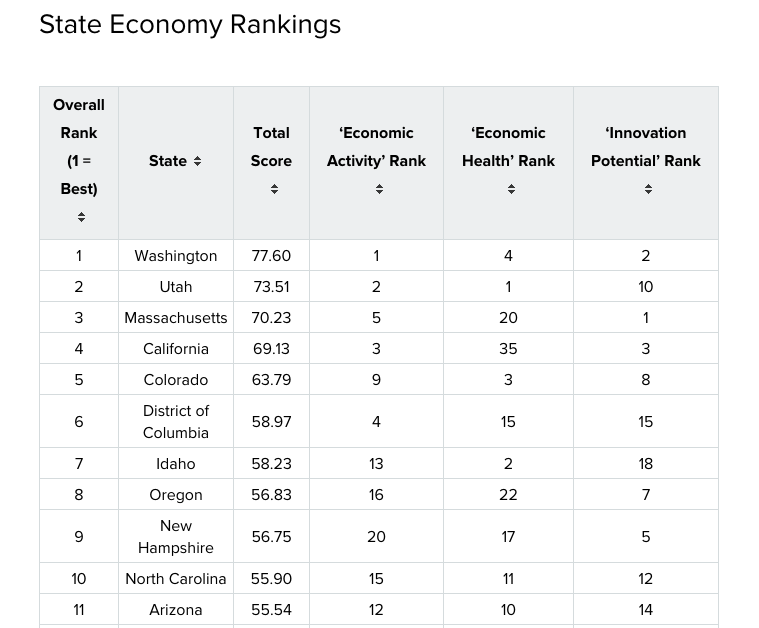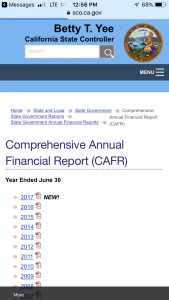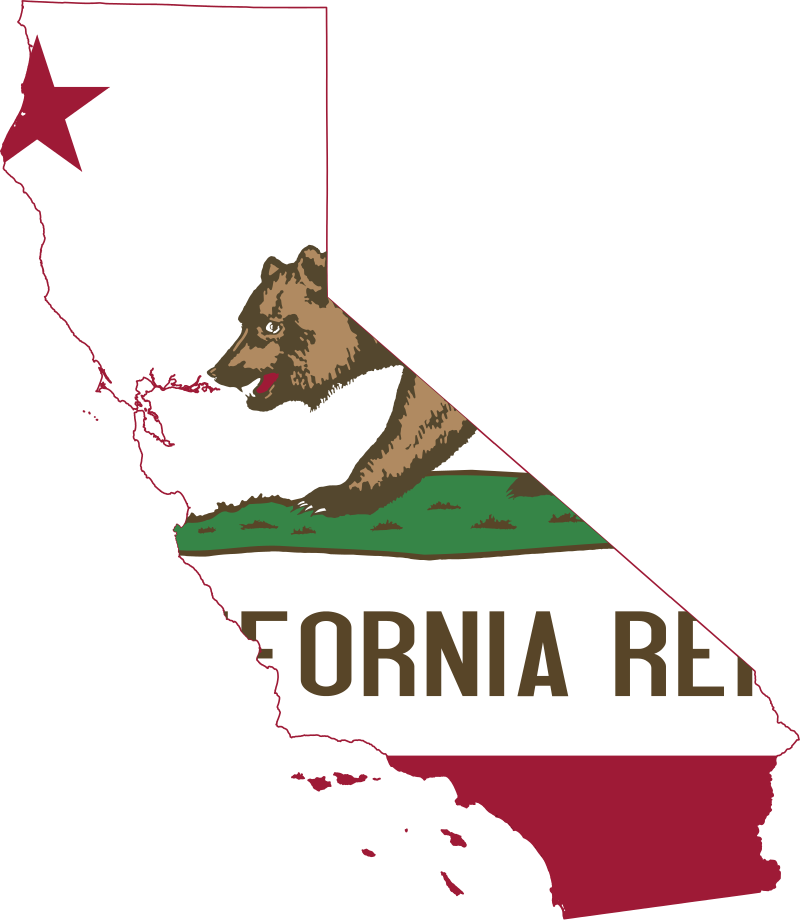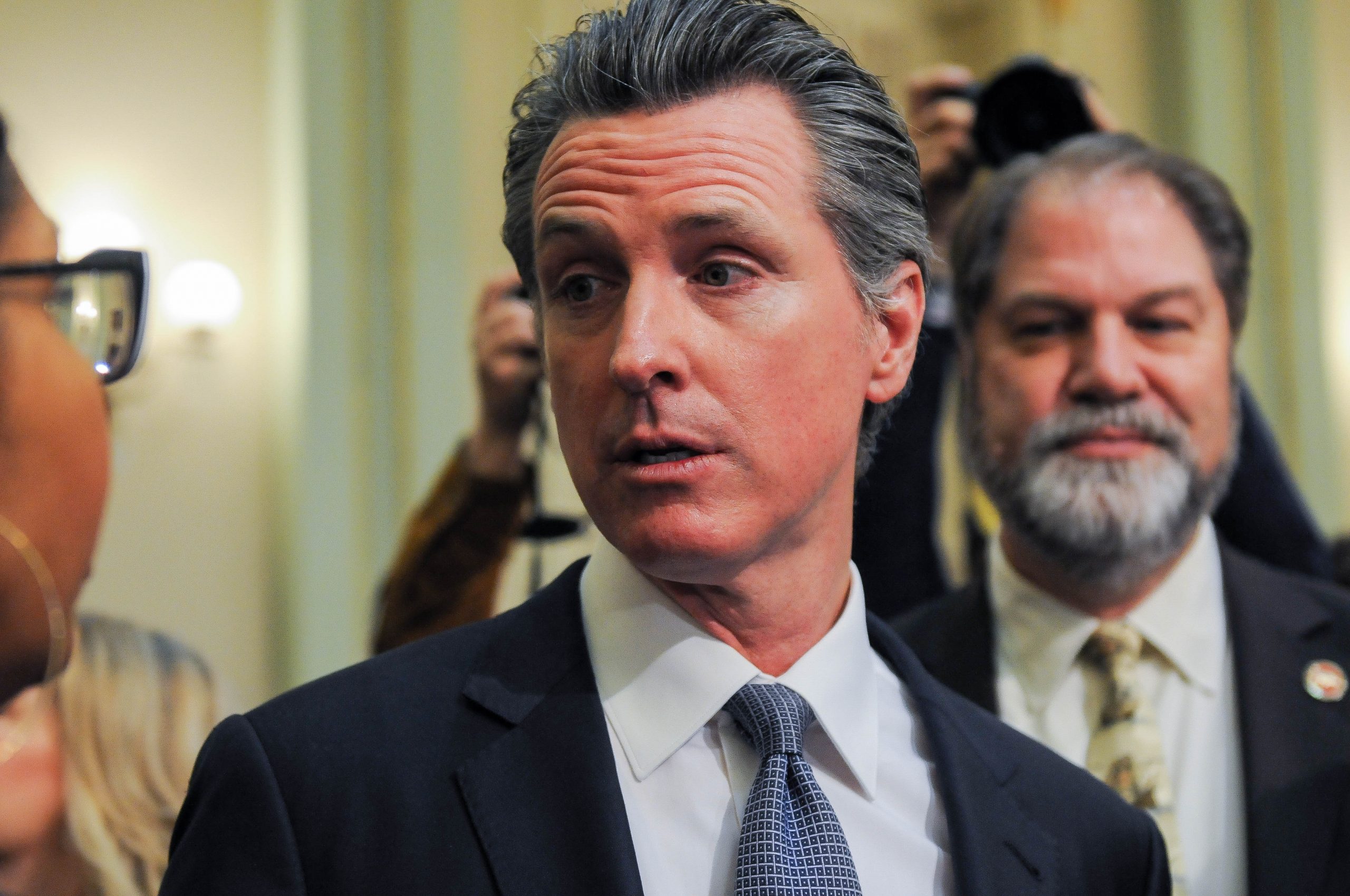
State Economy Rankings: California is a Real Dichotomy
Rankings show California’s economic health is not in the middle class
By Katy Grimes, June 10, 2019 7:32 am
California just ranked in the top 5 in the overall WalletHub 2019 State Economy Rankings, while ranking low in the Economic Health Ranking. WalletHub compared the 50 states and the District of Columbia across three key dimensions: 1) Economic Activity, 2) Economic Health and 3) Innovation Potential.
In October 2018, California ranked 5th worst in the nation based on most fiscally solvent states, in the WalletHub State Fiscal Rankings.
California has the highest poverty rate in the nation, but also ranked number #5 in the highest number of high-tech industry jobs.
California was ranked 47th in median annual household income, which dragged down its overall ranking.
California tied for a four-way-first with Massachusetts, Washington and Oregon in the number of independent investor patents.
These rankings show how California has driven out manufacturing and production, replaced with high tech and service jobs, and established a part time economy, with a massive welfare system.
Even the New York Times recognizes California’s issues: “California may be a symbol of liberal values, but it’s also a symbol of the failures of liberal policy. It has the highest poverty rate in the country, housing costs are out of reach for many, and squalor and deprivation plague the streets of the biggest cities.”

California’s Real Fiscal Health
Sen. John Moorlach (R-Costa Mesa) just took a dive head first into the latest release of California’s Comprehensive Annual Financial Report (CAFR) for June 30, 2018 by the State Controller, released June 3 – nearly one year after the close of the 2018 fiscal year:
“I focus on the Governmental Activities of a municipality, so let me start there,” Moorlach said. “First, the Unrestricted Net Deficit has grown by nearly $44 billion! That’s about $1,100 per resident. California’s Unrestricted Net Deficit for Governmental Activities is now $213.3 billion, up from last year’s $169.5 billion. Add in the Unrestricted Net Deficit for Business-type Activities of $16 billion, and the combined amount is $230 billion in the red! I told you we would be close to a quarter-trillion dollars.”
“Diving in for the basic details, we find that cash and pooled investments are up $12 billion. But, accounts payable is up $3.2 billion, for a total of $28 billion. Can you find me another municipality with a larger accounts payable balance? The big number, of course, is the addition of $45.5 billion in retiree medical liabilities to the balance sheet, bringing the balance to $73.7 billion. This is three times the amount LAUSD reported for the same fiscal year. And, although the stock market has been doing relatively well during that time period, unfunded pension liabilities rose by another $10.7 billion, to $88 billion.”
“Oh Lord, please forgive us our debts.”
The CAFR can be found at https://www.sco.ca.gov/Files-ARD/CAFR/cafr18web.pdf. Moorlach’s analysis is here.
WalletHub’s panel of economic experts point out that not all economic growth strategies are effective. For the best ways to stimulate the economy and achieve lasting prosperity, the experts shared their thoughts on the following key questions:
- What are the most effective ways for state and local officials to boost their local economies?
- What can states do to prevent “brain drain” and develop, attract and retain highly skilled workers?
- States often compete for business investment by offering tax breaks and other incentives. Do such efforts more often result in a net positive or net negative impact on state economies? Do such efforts create a “race to the bottom” across states?
- What makes a state attractive to potential entrepreneurs?
- In evaluating the states with the best economies, what are the top five indicators?
- Top 50 Disasters Gov. Gavin Newsom Has Ushered into California: 2025 Edition - December 17, 2025
- Gov. Newsom Announces Fired Former CDC Officials Will Lead New CA Public Health Exchange - December 16, 2025
- Failed State California: $18 Billion Deficit, High-Risk State Agencies, Record Out-Migration - December 16, 2025




